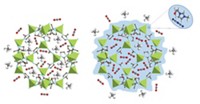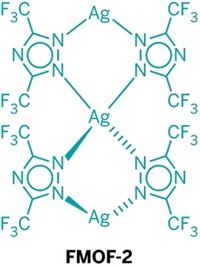Advertisement
Grab your lab coat. Let's get started
Welcome!
Welcome!
Create an account below to get 6 C&EN articles per month, receive newsletters and more - all free.
It seems this is your first time logging in online. Please enter the following information to continue.
As an ACS member you automatically get access to this site. All we need is few more details to create your reading experience.
Not you? Sign in with a different account.
Not you? Sign in with a different account.
ERROR 1
ERROR 1
ERROR 2
ERROR 2
ERROR 2
ERROR 2
ERROR 2
Password and Confirm password must match.
If you have an ACS member number, please enter it here so we can link this account to your membership. (optional)
ERROR 2
ACS values your privacy. By submitting your information, you are gaining access to C&EN and subscribing to our weekly newsletter. We use the information you provide to make your reading experience better, and we will never sell your data to third party members.
Materials
Methyl-lined pores trap simple alkanes
October 2, 2006
| A version of this story appeared in
Volume 84, Issue 40
A new type of designed material containing pores lined with methyl groups has been shown by François P. Gabbaï and his research group at Texas A&M University to reversibly adsorb simple alkanes at room temperature (Angew. Chem. Int. Ed., DOI: 10.1002/anie. 200602440). The compound could become the basis of a class of materials useful for separating or storing volatile hydrocarbons, the researchers note. Materials with columnar pore structures that can trap alkanes have been made before, Gabbaï adds, but the pores of those materials typically are lined with aromatic groups. The researchers made the new material by mixing a tris(alkynyl)benzene compound, [(CH3)3SiC≡C]3C6H3, with a trimeric perfluorophenylene-mercury complex, (HgC6F4)3. These molecules aggregate into extended stacks (shown; orange = Hg, purple = Si, green = F, gray = C) to form a honeycomb structure with the silyl methyl groups pointing into the pores. The team measured adsorption of up to 2.9 wt % for alkanes ranging from methane to n-hexane. The alkanes can be desorbed under vacuum without any structural changes to the starting material.




Join the conversation
Contact the reporter
Submit a Letter to the Editor for publication
Engage with us on Twitter